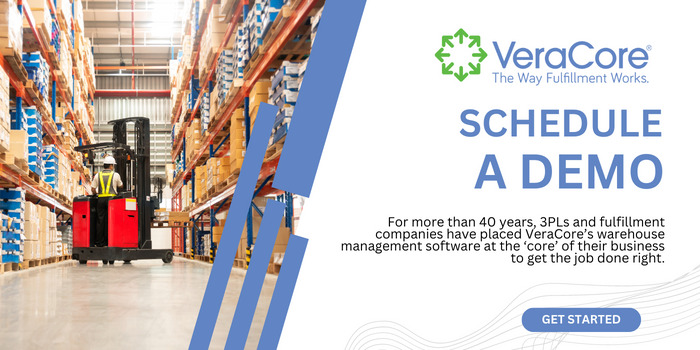In the arena of third-party logistics (3PL), finding ways to cut expenses without compromising operational efficiency is challenging.
However, with the advent of Smart Warehouse Management Systems (WMS), this doesn’t have to be as hard as you think. This guide outlines how WMS can help you reduce 3PL Warehouse expenses.
Implementing WMS For Storage Optimization
While the importance of optimizing storage capacity is known, the intricacies of achieving this are often underestimated. In the context of disrupted global supply chains, strategic stockpiling – namely, determining ‘what’ to store and ‘where’ can be challenging in terms of flexibility, affordability, and accessibility.
Why is that relevant? Efficient storage saves time, space, and resources along with minimizing errors by enhancing flexibility, communication, and management. A well-optimized warehouse stands to improve performance while saving needless costs.
Key considerations for warehouse storage optimization encompass:
Physical Infrastructure
The layout and structure of the warehouse play a pivotal role in storage optimization. A well-utilized physical space can ensure smooth operations and increased efficiency. This in turn can cut down costs on additional storage and labor.
Warehouse Flow
The flow of goods within the warehouse impacts accessibility and retrieval efficiency. Planning this flow helps goods move seamlessly from arrival to storage to dispatch, with little room for errors.
Product Placement
Strategically placing products based on demand patterns and accessibility requirements cuts down retrieval speeds.
Storage Methods
Utilizing appropriate storage solutions, such as racks, shelving, or automated systems, can increase space efficiency and capacity.
Retrieval Techniques
Efficient retrieval methods, including first-in-first-out (FIFO) or last-in-first-out (LIFO), help maintain optimal inventory turnover.
Careful implementation of these strategies will help you save expenses that go toward manual labor and storage expansion while increasing your workplace efficiency. Consider partnering with experts in layout and design principles. Their expertise can help you achieve better use of your space, making the investment worthwhile.
Other Cost-Saving Strategies
Inbound Logistics magazine highlights that a major challenge for merchants constitutes transportation expenses, accounting for about 37% of their concerns.
Let’s talk about how you can reduce these expenses
Data-Driven Demand Forecasting
Smart WMS systems are adept at collecting and analyzing large volumes of data. Using this, 3PL warehouses can make precise demand forecasts. This helps with better resource allocation for labor and equipment, thereby reducing unnecessary expenses.
Efficient Inventory Management
Inventory management can take up a chunk of expenses in a 3PL warehouse. Using WMS employs advanced algorithms to optimize inventory placement, reducing carrying costs. It also helps to prevent overstocking and stockouts.
Dynamic Slotting Optimization
Traditional static slotting methods often result in inefficient use of warehouse space. A Smart WMS uses dynamic slotting that constantly evaluates and reconfigures storage allocation based on demand patterns.
This ensures that high-demand items are placed for easy access, driving down operational costs.
Labor Management Efficiency
A Smart WMS enables precise tracking of labor metrics like order processing times and pick-up rates. Using this, warehouses can identify areas for improvement enabling them to optimize staffing levels and minimize overtime or extra labor costs.
Automated Order Processing
Automation through a Smart WMS can significantly reduce order processing times. Automated systems can accurately pick, pack, and sort items, reducing the need for manual labor. This not only cuts down operational expenses while enhancing order accuracy and customer satisfaction.
Streamlined Returns Processing
Processing returns can be a costly and time-consuming aspect of 3PL operations. WMS can streamline this process by providing real-time visibility into returned items.
This helps with quicker evaluation and disposition, reducing the holding costs associated with returned merchandise.
Energy Efficiency
Implementing energy-saving measures can greatly reduce costs. WMS helps by optimizing lighting and heating systems based on occupancy and usage patterns; reducing needless energy expenditure.
Vendor Performance Analysis
WMS can help you track the performance of suppliers and carriers, which allows 3PL warehouses to identify areas for improvement or negotiate better rates. This data-driven approach empowers warehouses to make informed decisions that positively impact their budget over time.
Continuous Process Improvement
Cost-saving is a constant effort. A Smart WMS provides comprehensive reporting and analytics capabilities which allows warehouses to continuously monitor and evaluate their operations. This helps them identify opportunities for resource optimization and cost reduction.
Why Turn To Veracore?
Embracing Veracore’s Smart Warehouse Management System empowers 3PL warehouses to implement a range of strategies aimed at optimizing expenses with ease.
By leveraging data-driven insights, automation, and advanced technologies, warehouses can achieve significant cost savings while maintaining operational excellence. Adoption of a Smart WMS is a crucial step toward ensuring long-term profitability and competitiveness in the 3PL market.


VeraCore is SaaS order and warehouse management software trusted by top fulfillment companies and 3PLs. Affordable, flexible, easy to use; VeraCore is everything you need to keep clients happy and run a lean operation.
With VeraCore, you can grow your business and handle any challenge with ease. Rules-based automation enables you to control all aspects of your warehouse operation and satisfy each of your clients’ unique requirements.
Hundreds of fulfillment service providers and 10,000+ fulfillment clients place VeraCore at the “core” of their business to get the job done right, for over 40 years.


